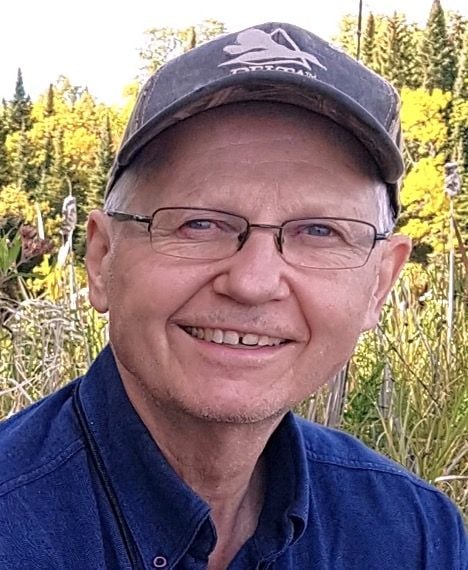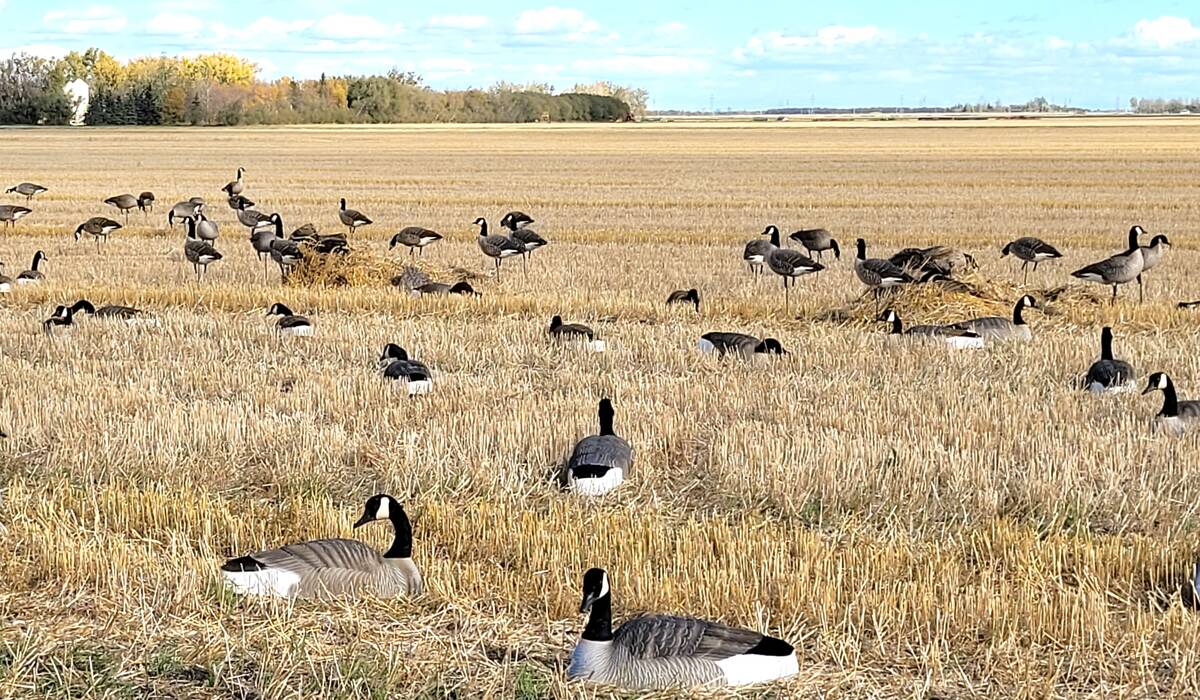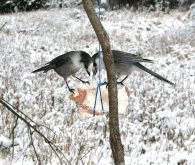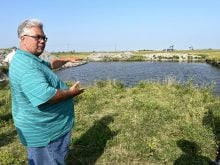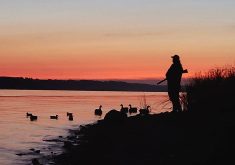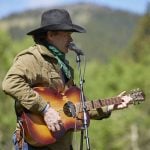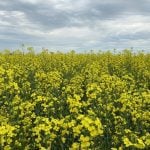I could feel my anxiety ramping up as the lone goose approached our decoys and side-slipped within range. My hunting partners had a front row seat for my first shot, and I was cradling a new shotgun.
I hadn’t shot that 12-gauge enough to be really confident with it. It didn’t help that I had neglected the skeet range earlier. But now the shot was called. I sat up and shouldered the gun as the bird swung right.
Instead of following the cardinal wing-shooting rule — swing through the bird and shoot without thinking about it — I swung, but then worried that the gun wasn’t shouldered properly. I swung some more, and thought some more. The bird was getting behind me; the shot was just getting harder.
Read Also

The new spin on farm legacy
Farmers are starting to think differently about the future of their farms in Western Canada. What does this mean for the next generation and farm succession planing?
Finally, I hit the trigger. A thump on the ground soon followed. As I walked over to pick up my bird, the boys couldn’t resist a few shots of their own.
“Sopuck, stop grandstanding. Just shoot!” Rob Olson teased.
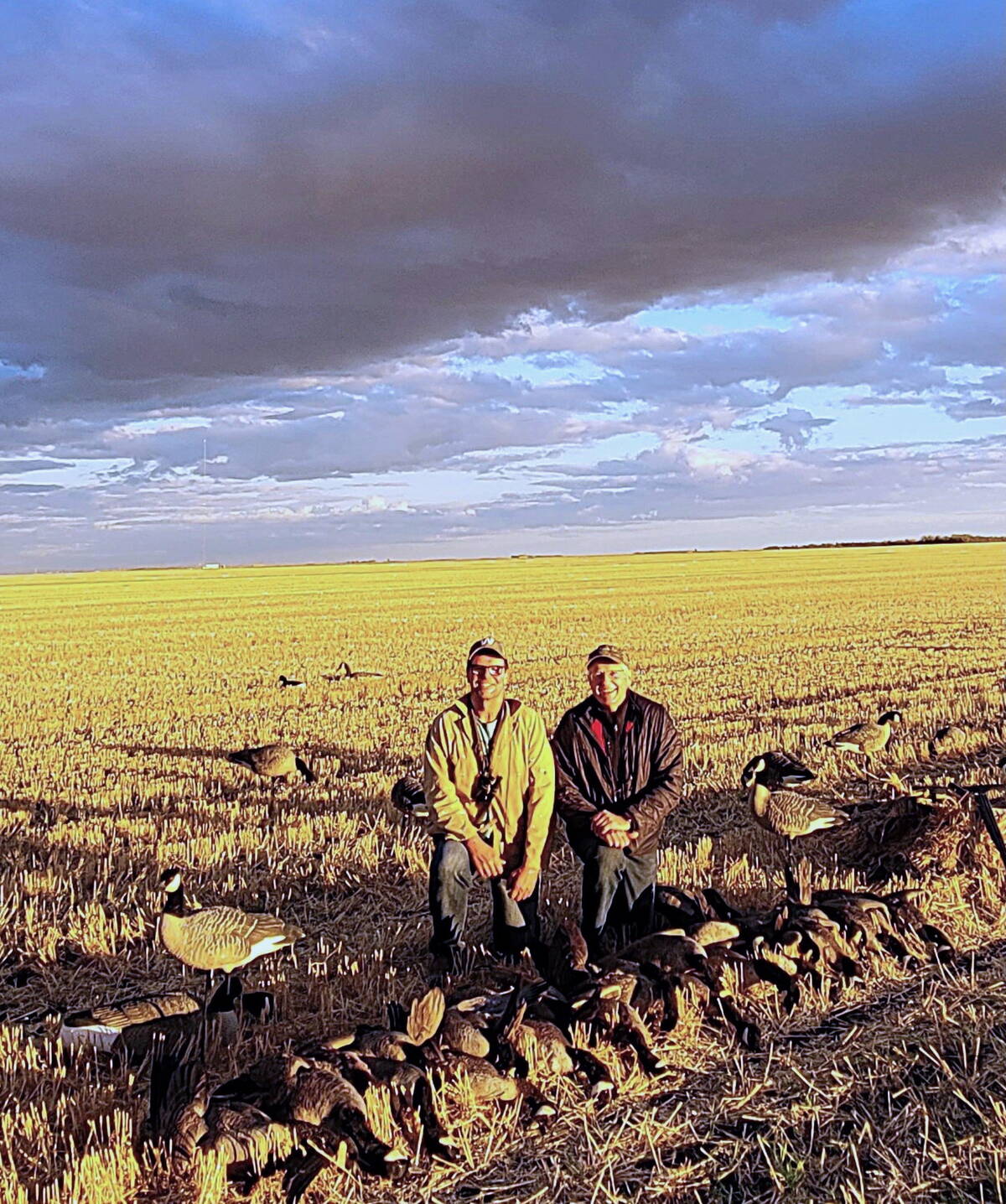
It was a rare privilege to be the guest of Olson and Warren Bernhardt on that September hunt. I’ve known and worked with the former for decades and this hunt was my chance to get to know the latter. They come with a deep well of experience, have the gear and they did all the critical preparatory work. I was joining a ready-made hunt.
We set up early in the afternoon, placing about a hundred decoys and putting up thatched layout blinds. Tasks completed, we relaxed, chatted and anticipated the evening flight.
Olson predicted that we would see hundreds of geese working the general area and, like so much else about the hunt, he was spot on. After the first few flights and some decent shooting, we saw that the set-up was working. We dialed back the adrenaline a bit — a hard thing to do, as any hunter knows — and savoured the evening.
So often, the best hunting plans are upset by a wind change or birds that suddenly decide to hit a different field. Not this time. About 30 minutes before sunset, Olson confirmed that we had just taken our limit. It was time to pack up, reflect on this special experience and clean 24 birds.
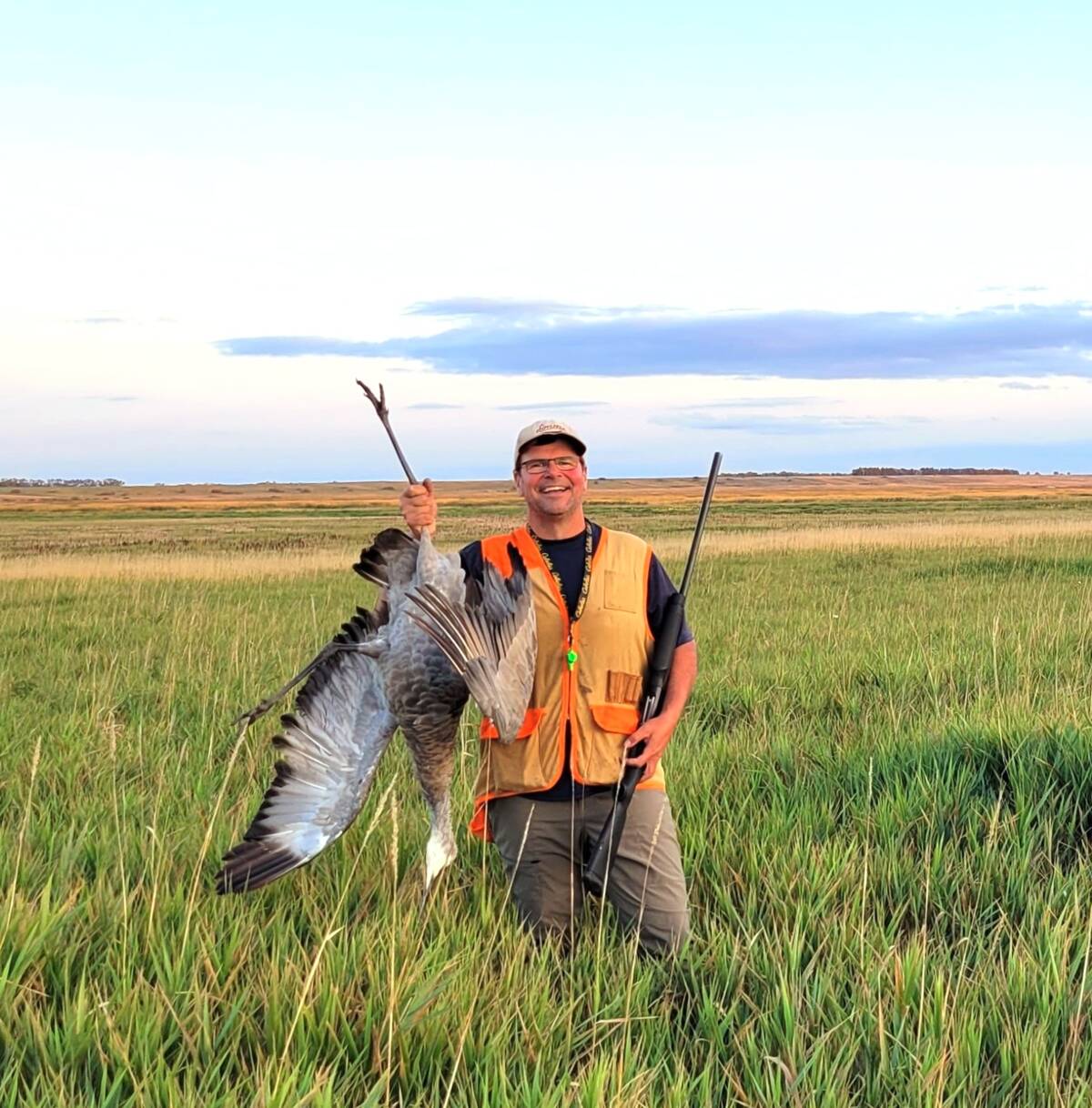
Field hunting Canada geese the ‘Olson Way’
Olson is one of the finest hunters I know, and this is especially true for waterfowl. Raised in an extended family of passionate waterfowlers, he entered the waterfowl conservation world after graduate school. His boundless energy, passion and strategic mind took him to senior management roles at the Delta Waterfowl Foundation. He also served as the director of wildlife and deputy minister in what, at the time, was Manitoba’s Department of Sustainable Development.
These days, he’s a semi-retired wildlife consultant who finds ways to keep work from conflicting with a busy hunting schedule.
My goose hunting usually takes place in marshes. I haven’t invested in a big spread of field decoys. These days though, I have more time for scouting and there is great field hunting just beyond Winnipeg’s Perimeter Highway.
If I’m going to plunge into field hunting, picking Olson’s brain was the place to start.
Finding and accessing fields
Olson’s scouting trips begin at sunrise. He’ll start not too far away from overnight roost locations and follows goose flights out to their feeding sites. If a feeding concentration looks promising — large numbers of birds that look like they haven’t been disturbed for a while — the critical next step is finding the landowners.
If Olson doesn’t know the area, he’ll start by driving to the nearest house, ideally a farmyard, and ask politely about who owns the land.

“This is the time to overcome any inherent shyness to talk to strangers,” said Olson. “If you haven’t had much experience here, you’ll be shocked by how nice farmers are.”
If the first folks you talk to aren’t the owners, they likely know who they are and will probably supply a phone number or yard location.
Olson also has the iHunter app, which he finds invaluable. It includes options to purchase landownership maps for a small fee. He can keep notes on a given parcel and drop a geo-referenced pin that can be helpful when looking for a field entrance in the dark.
Ask about the landowner’s rules. These may include hunting a good distance from dwellings, a moratorium on early morning shooting or asking that no trucks go on the field.
Ask if permission has been given to anyone else at the time you wish to hunt. Sharing a field with another party never works out.
Field hunt set-up
Geese feed once in the morning and again in the evening. I’ve been a morning hunt guy, but Olson leaned to evenings, pointing out that we’d be watching and shooting away from the sun, not into it like we would in the morning.
We were also in a fairly populated area, where neighbouring landowners are far more accepting of supper-time gunshots than at dawn.
Decoys
Olson uses a mix of full-body, shell and silhouette (two-dimensional) decoys. His spread of about 100 decoys is laid out in wide U-shape, with the flanks trailing downwind. Like airplanes, geese land and take off into the wind. They also prefer to land in an opening, rather than stacking in with other birds. Set the blinds in the decoys, facing the downwind opening, which should be in good gun range.
Olson uses layout blinds, sometimes called coffin blinds, which are built to keep hunters concealed and low to the ground but that also have some back and head support.
Olson insisted that we add a good layer of thatch to our blinds. “Our success will be directly proportional to the amount of straw we weave onto our layout blinds,” he said as we were setting up.
I kept adding straw into the sewn-in loops until my blind looked like a low straw pile that the combine had dropped.
Think about the most probable flight path into the decoys and orient each hunter’s blind to maximize their ability to swing their shotgun on birds.
I’m left-handed, so my most effective swing is to the right. Olson placed me on the right side, with my blind angled a little to the left, maximizing my swing range.
Hunting magazines and websites have a bias towards big, expensive decoy spreads. Olson believes that good concealment in the right field is more important. “Two dozen decoys will often do the job,” he said. “Add more to your inventory if you decide to get more serious.”
Calling for geese
Hunting with Olson and Bernhardt was like attending a goose-calling master class. Their Judas honks, chuckles and other goose talk impressed me, and the birds weren’t shying away either.
Olson offers up three tips for beginners:
1) Buy a “goose flute” style of call. It’s the easiest to use.
2) Watch YouTube videos to learn a range of calls.
3) Practice in the car when you’re alone on long drives.
That last one sounds silly, but think about it: Where else can you practice and not drive other people crazy?
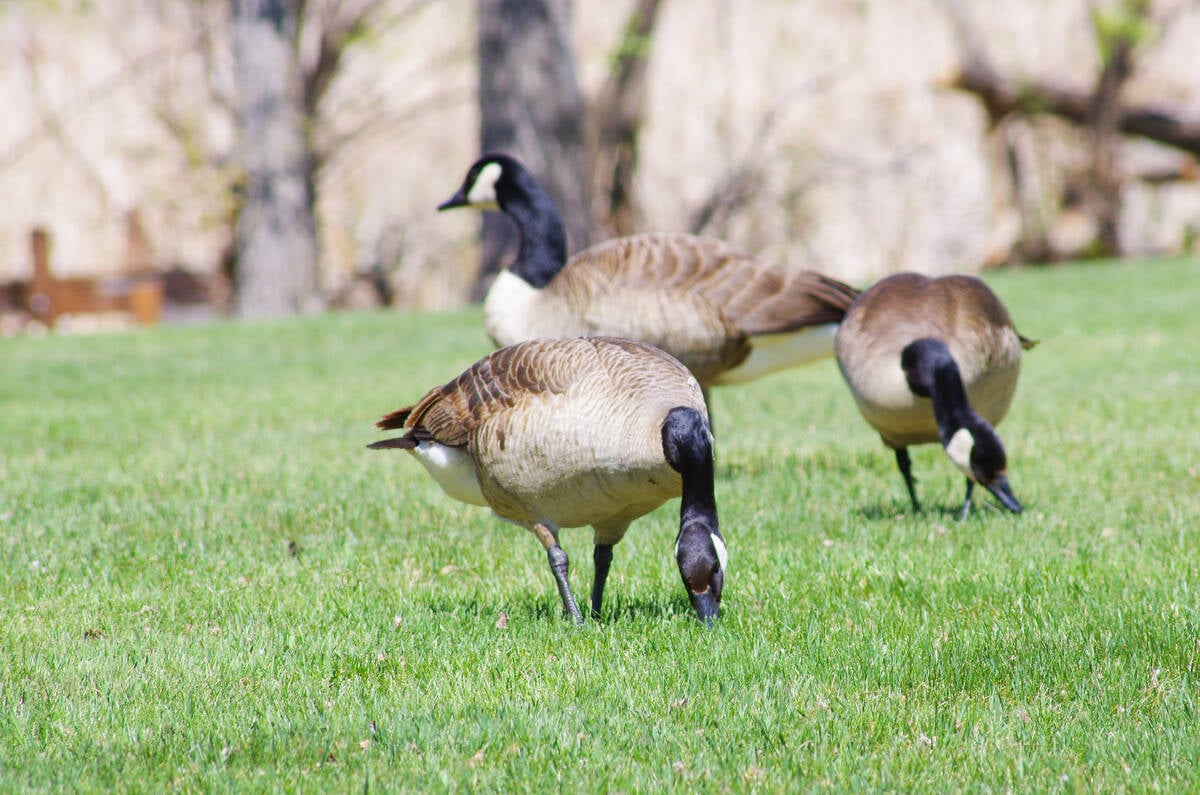
Beginners can focus on two basic calls: the standard honking call and excited chuckle calls. I have a habit of putting down the call as the birds start to get close, but Olson advises against that. “When geese are alarmed, they go silent just before they take flight. Continuing to call as they come in is reassuring,” he said.
When I asked about the importance of being a good caller, his view is that it’s more important to call than not. “The range of noises that geese make is quite remarkable, so don’t assume that they’ll flare because your calling is off.”
Flagging birds down
Olson is a big believer in goose flags, pole-mounted pieces of dark fabric cut to mimic the outline of a flying goose. Start with the flag above your head and flap it as you lower it to the ground, roughly simulating a landing goose. Olson starts when the geese are distant, mainly to get their attention, and keeps it up until the birds have committed, but are still out of range.
The final approach
Lots can happen in the final 100 metres that will make the difference between rising for a in-range shot or watching geese flare off at 75 metres. Olson’s checklist includes keeping still and staying concealed, especially your face. Wearing a camouflage face cover or keeping it under the blind cover is crucial.
Before the hunt starts, the group should pick one person to decide when to shoot. It’s a thankless task, because you’re going to get it wrong sometimes. Judging distance while peeking from behind cover is hard. Olson sets up a lone, marker decoy 35 yards (32 metres) downwind from his blind to help judge distance. The most common mistake is to call the shot too soon, but if you wait too long, you may be shooting at birds that are already flying past you.
Olson always has a safety chat beforehand. Blinds are checked for proper orientation and each hunter needs to know their “no shoot” area. The hunter on the right shouldn’t be shooting across the group to birds on the left and vice-versa.
Guns and loads
Newer waterfowling shotguns, which are almost always 12-gauge, can take ever-bigger powder and pellet loads. Most hunters use three-inch magnum loads, and some even go to 3.5-inch loads. Ask certain waterfowlers about the ideal load and you’re sure to start a vigorous debate.
Olson’s take is that people spend too much money and time fussing over expensive loads and not enough on scouting, their set-up and their concealment. “Hunters should also ensure that their gun fits them properly, and that they practice their shooting.
“Do those things and you’ll do fine with 2.75-inch or three-inch BB loads,” Olson suggested.
Putting it all together
If you ask Olson if you should add Canada geese into you fall schedule, you’ll get an enthusiastic response: “After five decades in the field, I can safely say that the good old days are now. Compared to the old days, Canada is incredibly abundant. It’s the best time ever to be a goose hunter.”
Amen.

